|
Printables |
PowerPoints |
Online exercises |
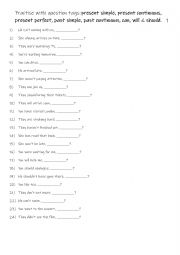
|
A2+-B1 Practise with question tags present simple, present continuous, present perfect, past simple, past continuous, can, will & should. 1
Learning question tags with various tenses (such as Present Simple, Present Continuous, Present Perfect, Past Simple, Past Continuous, Can, Will, and Should) helps students communicate more naturally and confidently in English. Question tags are used to confirm information or seek agreement, making conversations smoother and more engaging. Practici...
Level: intermediate
Age: 8-100
Type:
Downloads: 148
|
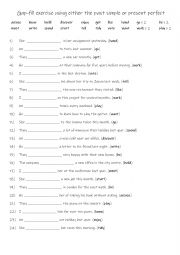
|
A2+ -B1 Gap-fill exercise using either the past simple or present perfect - Copy
Students read the sentences and complete the gap-fill with the correct form using the word in bold. For more able students you could remove the word in bold at the end of each sentence to make it more challenging.Answers on page 2.
Level: elementary
Age: 8-100
Type:
Downloads: 128
|
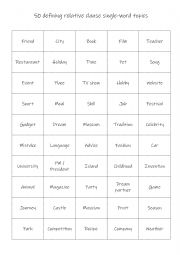
|
Defining relative clauses
50 defining relative clause single-word topics. Students pick a topic and define it.Topics include various: people, places , things and time etc. Or this worksheet can be used as a Tic-tac-toe / noughts and crosses speaking reinforcement activity for younger learners. It is suitable for B1+-C1 students.
Level: intermediate
Age: 12-100
Type: worksheet
Downloads: 114
|
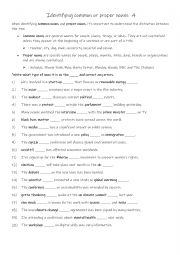
|
Identifying common or proper nouns 4
First, students need to familiarise themselves with the 2 types of nouns. Then they read the sentences to identify and use the correct punctuation for all of the sentences. Answers on page 2
Level: elementary
Age: 8-100
Type:
Downloads: 144
|
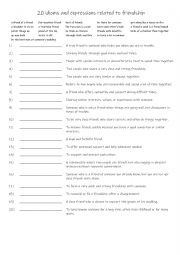
|
B2-C1 20 idioms and expressions related to friendship
First, students need to familiarise themselves with the 20 idioms and expressions and their meanings. Then they read the definitions to see which one is being described and write that word in the space provided Answers on page 2.
Level: advanced
Age: 13-100
Type:
Downloads: 108
|
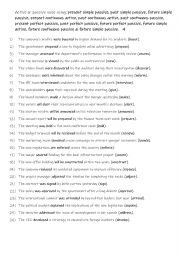
|
Active or passive voice using present simple passive, past simple passive, future simple passive, present continuous active, past continuous active, past continuous passive, present perfect passive, past perfect p
Learning active and passive voice across these tenses enhances students� ability to express ideas flexibly and appropriately. By mastering these structures, students can adapt their language for different purposes, enhancing their overall fluency and effectiveness in both spoken and written communication. Students familiarise themselves with the te...
Level: intermediate
Age: 10-100
Type:
Downloads: 105
|
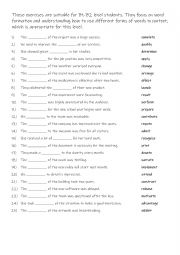
|
Word formation practise
Word formation supports more nuanced expression. Learners can tailor their language to convey specific meanings or tones by manipulating word forms (e.g., choosing between �happy� and �happiness� or �inform� and �information�).These exercises are suitable for B1-B2 level students. They focus on word formation and understanding how to use different ...
Level: intermediate
Age: 10-100
Type:
Downloads: 127
|
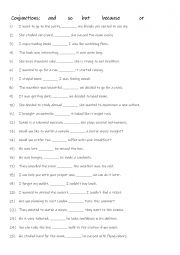
|
A1-A2 Conjunctions: and, so, but, because & or
Students familiarise themselves with the 6 linking words and their use.Then they read the sentences to see which conjunctions is needed to complete the gap-fill. Each linker is used 5 times in this worksheet. Answers on page 2.
Level: elementary
Age: 7-100
Type:
Downloads: 120
|
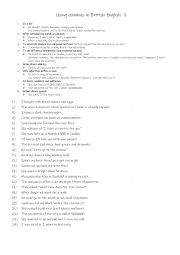
|
Using commas in British English 1
First, students need to familiarise themselves with the 8 reasons why a comma is used. Then they read the sentences and punctuate them accordingly. Answers on page 2.
Level: elementary
Age: 7-100
Type:
Downloads: 105
|
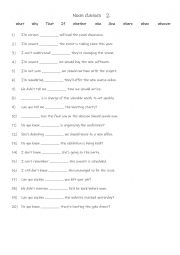
|
Noun clauses 2
Students complete the gap-fill with the correct word. Each word is used 2 times! Answers on page 2.
Level: elementary
Age: 8-100
Type:
Downloads: 108
|
|
|
|
|












